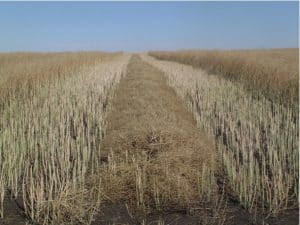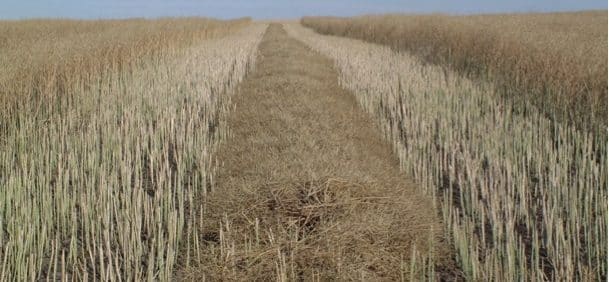
Strip trials are useful tools to test a product or practice to see if it improves the standard or “check” practice. Growers and agronomists may still have a few strip trial ideas for this year, say on swathing timing, for example.
Here are common ways that strip trials are mismanaged, creating results of questionable value:
No replication across sites. Ideally, there should be four replicated strips in a field.
Too many variables. With more than one variable, it is difficult to tell which product or technique provided the benefit. Tank mixing boron and fungicide and comparing that to an untreated check, for example, makes it impossible to tell whether the fungicide or boron provided the benefit (if there was a benefit.)
Not swathing a full swather width through the middle of each treatment. To compare treatments for their benefit on yield, the same area needs to be compared.
Not adjusting for variable land. Replicated strips help adjust for this, but fields with high levels of variability due to topography, soil type, etc., are not usually the best choice for strip trials.
Using yield monitors rather than weighing out with a scale. Strips should be harvested separately and weighed. This will provide more accurate and useful results. Yield maps may show some trends, especially if the strips show up clearly on the maps, but weigh wagons are more accurate.
Comparisons are based on results from different fields. One field is variable enough, which is why the replicates are important. Comparing results from different fields are just about useless. If one field treated with fungicide yields more than an untreated field, this is not a fair conclusion in favour of fungicide. So many other variables are at play, including the potential wide variability in rainfall within a short distance — especially this year.
See more tips at the Ultimate Canola Challenge webpage.

